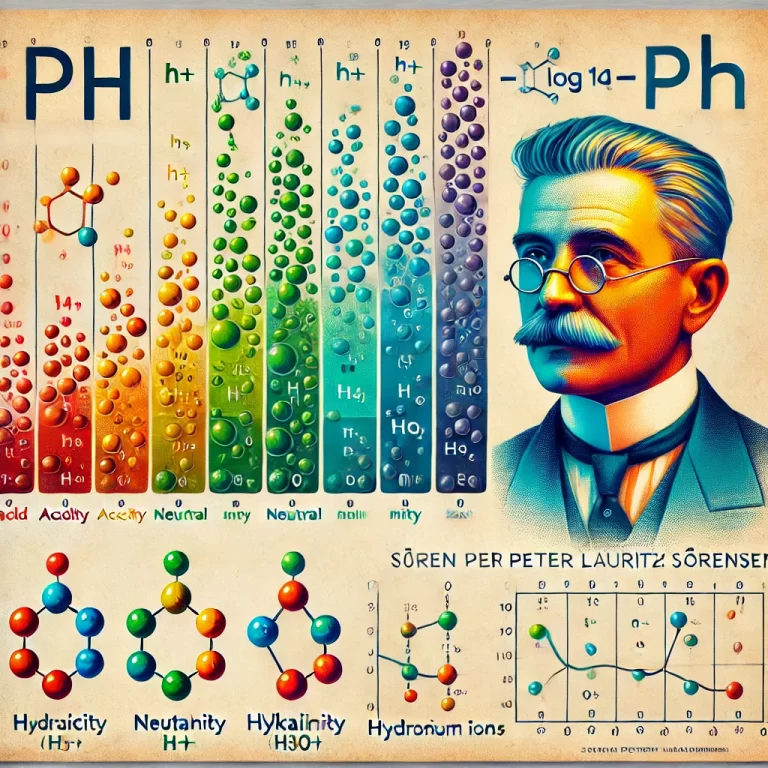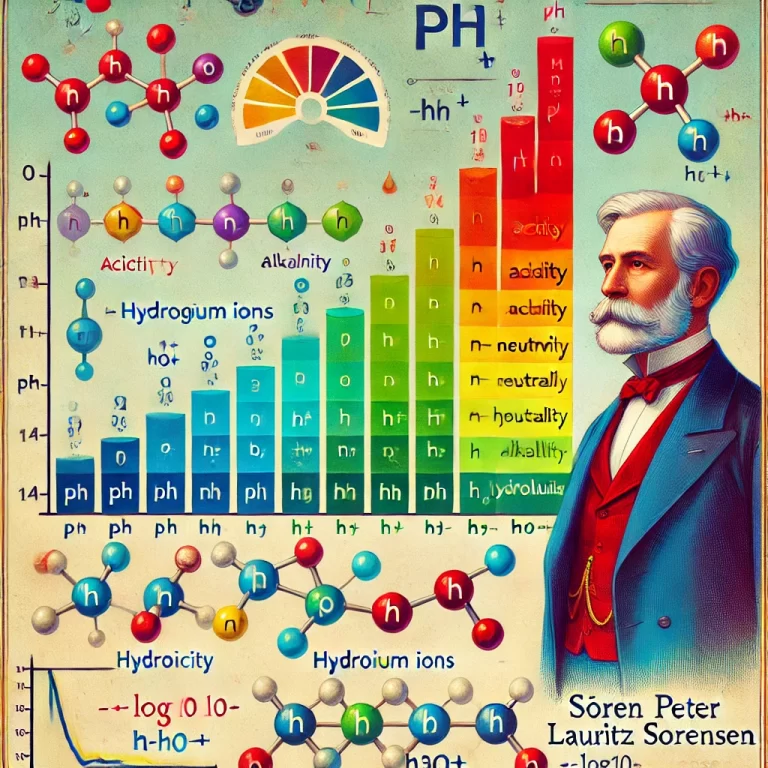The representation of pH has long intrigued learners of chemistry. While the scientific community universally accepts this notation, the reasoning behind the lowercase “p” and uppercase “H” is often misunderstood. Let’s explore this topic in depth, starting with the basics of pH, its origins, and why this specific notation is used.
1. What is pH?
pH, also referred to as the hydrogen ion concentration index or the measure of acidity/alkalinity, is a scale used to quantify the acidity or basicity of a solution. It serves as a standard for assessing the relative strength of acids and bases in aqueous solutions.
The concept of pH was introduced in 1909 by Danish biochemist Søren Peter Lauritz Sørensen. In the term “pH”:
- “p” is believed to derive from the German word Potenz (meaning “power” or “concentration”) or the French word puissance (also meaning “power”).
- “H” stands for hydrogen ions (H+), as it directly relates to the concentration of these ions in the solution.
The pH scale ranges from 0 to 14 (at 25°C, or 298K):
- A pH closer to 0 indicates a stronger acidic solution.
- A pH closer to 14 indicates a stronger basic solution.
- A neutral pH of 7 implies equal concentrations of hydrogen ions (H+) and hydroxide ions (OH−).

2. The Chemistry Behind pH
In water, hydrogen ions (H+) do not exist in isolation but are instead associated with water molecules, forming hydronium ions (H3O+H3O+H3O+). However, for simplicity, the concentration of hydrogen ions is often referred to as H+.
The mathematical expression for pH is: pH=−log10[H+]
Here:
- [H+] is the molar concentration of hydrogen ions in the solution, typically expressed in moles per liter (mol/L).
- The negative logarithm base 10 reflects the inverse logarithmic relationship between hydrogen ion concentration and pH.
Importantly, pH values are unitless because they are derived from a logarithmic calculation.
3. Why is “p” Lowercase and “H” Uppercase?
The notation “pH” is a standardized representation, and its specific format has practical and historical significance.
“H” is Uppercase
- The uppercase “H” refers to the element hydrogen, whose symbol in the periodic table is always capitalized. In the context of pH, it represents hydrogen ions (H+).
“p” is Lowercase
The lowercase “p” has a more nuanced explanation:
- Linguistic Origins: Some suggest it originates from the German Potenz or French puissance, both meaning “power” or “potential.” Others believe it comes from the Latin potentia hydrogenii (hydrogen power or potential) or pondus hydrogenii (quantity of hydrogen).
- Notation Usage: In modern chemistry, “p” is conventionally used to denote the negative base-10 logarithm of a quantity. For example, pKa (acid dissociation constant) or pOH (hydroxide ion concentration).
- Historical Simplicity: It is also speculated that Sørensen may have chosen “p” arbitrarily, as he used other letters like “q” in similar contexts.
Regardless of its origin, lowercase “p” has become the accepted standard when combined with symbols like “H” to denote specific chemical concepts.
4. Common Misrepresentations of pH
While “pH” is the correct and standardized form, variations like “ph,” “PH,” or “Ph” are incorrect and should be avoided. Adhering to the proper notation reflects both scientific accuracy and respect for established conventions in chemistry.

5. Additional Insights
pH measurement plays a crucial role in numerous fields, from biology and medicine to environmental science and industrial processes. For instance:
- Human blood maintains a pH around 7.4 for proper physiological function.
- Ocean acidification, driven by rising CO2 levels, reflects a decrease in oceanic pH, impacting marine ecosystems.
Understanding the principles behind pH, including its notation, deepens one’s grasp of chemistry and its applications.
Conclusion
The use of lowercase “p” and uppercase “H” in pH is a result of linguistic, historical, and scientific factors. It embodies the blend of mathematical precision and practical application that defines chemistry as a discipline. Whether you’re a student or a professional, appreciating these details enriches your understanding of one of the most fundamental concepts in science.
